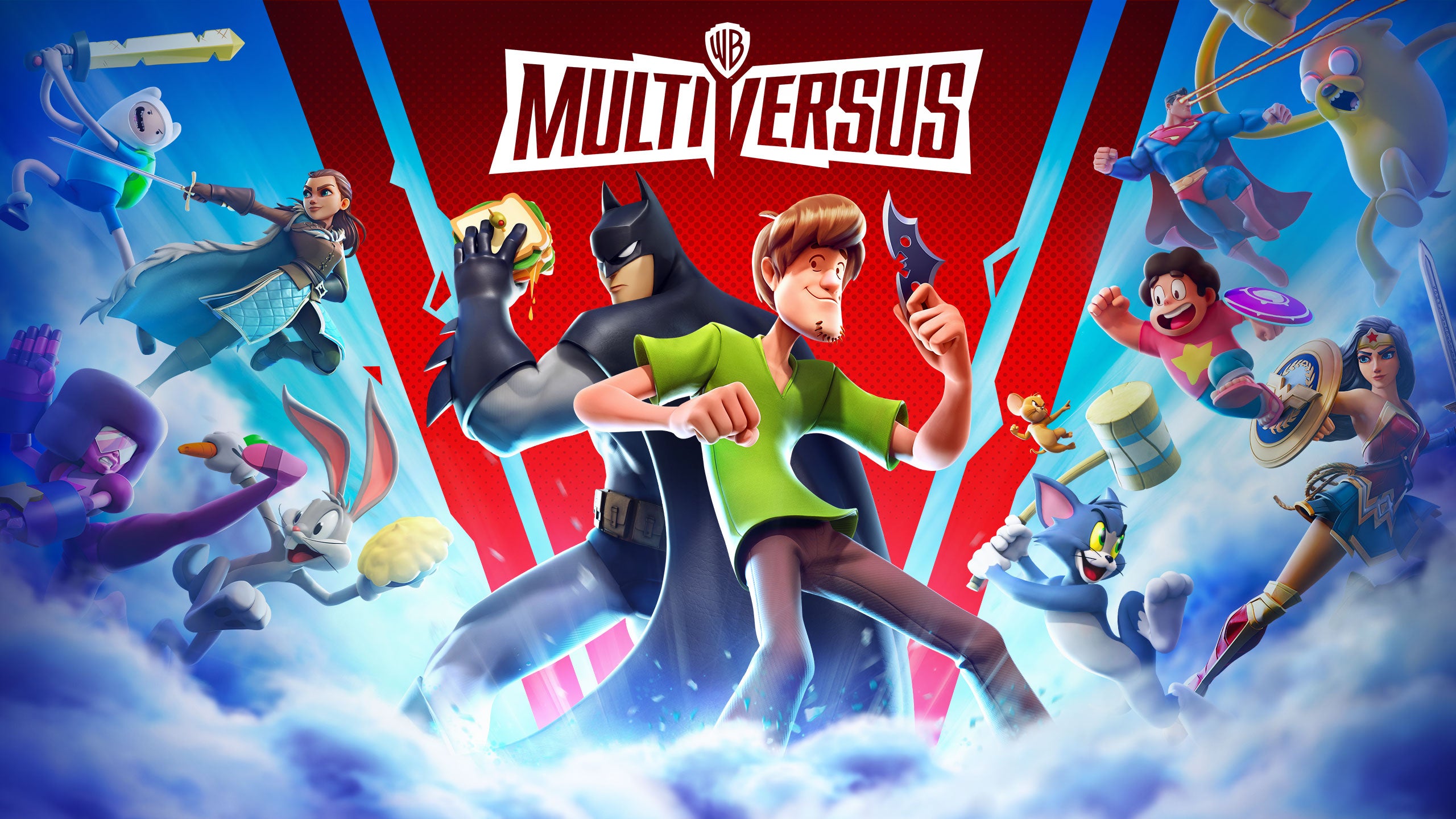The Super Smash Bros series is a near-impossible act to follow, but that’s exactly the challenge MultiVersus faces as a new, free to play Smash-like from developer Player First Games. Now in open beta on PS5, Xbox Series X, last-gen and PC, it’s a 5GB download that lets anyone hop in. It’s admittedly light on options – as you may expect from an open beta – but you do get to tinker with 17 characters – all fully voice-acted. Crucially, MultiVersus also launches with robust online play, built from the ground up with rollback netcode – right away giving it an edge over Super Smash Bros Ultimate’s online play on Switch. It’s off to a good start. Speaking purely on MultiVersus’ visual design as an Unreal Engine 4 title though, how much does it get right next to Nintendo’s heavyweight? And where does it seem to fall short in its open beta state?
So, what’s actually contained in the 5GB package? Entire modes are blocked off with a ‘coming soon’ descriptor, but you do get a practise mode to test out everything. MultiVersus’ character line-up alone is fascinating enough to warrant giving it a try. Rather than pitting the mascots of the video gaming world against one another – as is the remit of Smash – here, it’s famous faces from Warner Bros’ properties. Between comics, movie franchises, and TV shows, it’s a wider net being cast. Honestly, the result is as eclectic as it sounds: from Batman to Bugs Bunny, and from Arya Stark to LeBron James (in his Space Jam get-up). Fortunately the game is mechanically sound at its core. Smash fans will feel right at home with its 1v1 or 2v2 melee-battling; standard and special attacks, double jumping, dodging – it’s all here. Even if the movement take a bit of adapting to – and my preference remains with Smash Bros Ultimate in this spot – it’s impressive how much MultiVersus gets right.
MultiVersus vs Super Smash Bros Ultimate – DF Tech Review – PS5 vs Xbox Series X/S Watch on YouTube
MultiVersus’ technical make-up on console is strong. In a nutshell you get a native 4K at 60fps on PS5 and Xbox Series X, while Series S targets 1440p at 60fps. Dynamic scaling might be in use, given it’s an Unreal Engine title, but frame-rates are typically rock-solid at 60fps on all three machines – barring unique small drops on PS5 during the Sky Arena stage. All of this is a superb foundation to build on for a contender to Smash Bros. In fact, to compare the two, I tracked down the nearest-best match map in Smash Bros Ultimate to the small selection in MultiVersus. Hands up here, some side-by-sides are a bit of a stretch, I realise. Even so, you can see in the shots below that some maps – like the colosseum – have a direct equivalence.
The first point of comparison is in image quality. To Multiversus’ credit it sports a pristine, almost aliasing-free image owing to its 4K resolution on premium consoles. It looks clean in a way Smash Ultimate simply cannot compete with on Switch, being stuck at 1080p. Regardless, Nintendo’s brawler still scales well to a modern 4K display overall, where the bold character designs make the action legible even in huge, eight player games. There’s a sharpness to the look of Smash Bros overall, which helps, while MultiVersus opts for a clean, pristine, post-processed image. Also, oddly, MultiVersus by default enables bold coloured outlines on characters to help make action easier to tack. It’s an unusual choice, especially given Nintendo’s approach is clear to read without any such visual assist – but they can be disabled.
Next up are the stages themselves. Stage detail in Smash Bros is simply much higher, more inventive, and more busy. Taking the colosseum levels in each game as an example, the seats to the distance in Smash Bros Ultimate are filled with crowds, flags, bonfires and finer stone brickwork – it’s packed out. As for MultiVersus? We instead get a simple, barren array of seats: no background crowds, and little movement. There’s some physics destruction, at least, with deforming platforms on the Batcave changing the field of play. Overall MultiVersus’ stage designs are very functional, readable, but too often static by comparison. I’d dare say more should be possible here in terms of their spectacle. Each should be a celebration of a theme, especially looking at brands as vibrant as Looney Tunes. Turning back to Smash Bros Ultimate for reference, each stage is treated like a character in itself, moving like a fairground ride, and tapping into any nostalgia you might have for a game.
